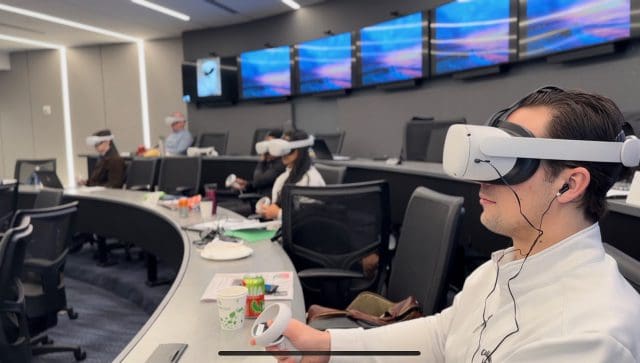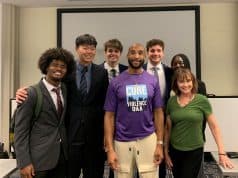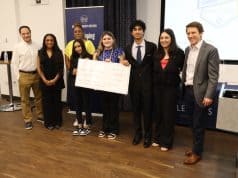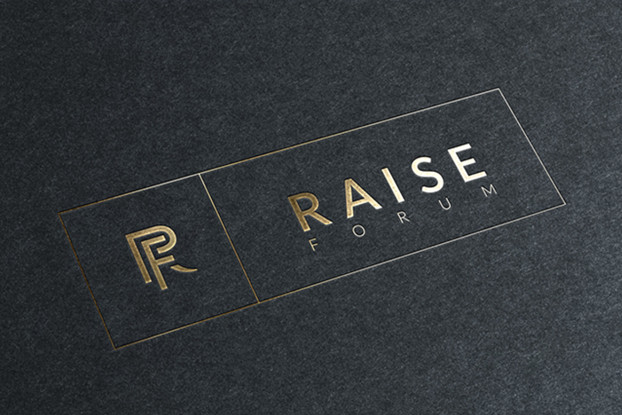Jill Perry-Smith is bringing an entirely new dimension to Goizueta’s Executive MBA program. Her focus: navigating difficult conversations and finding effective conflict resolution strategies.
Through the use of virtual reality (VR) and artificial intelligence (AI), Perry-Smith, senior associate dean for strategic initiatives and professor of organization and management, hopes to provide more students with experience in dealing with interpersonal conflict, which she defines as a conflict between individuals that involves an emotional reaction.
“Throughout one’s career, there are situations of interpersonal conflict that arise,” Perry-Smith says. “Oftentimes, you need to work with this person. You need to get past the conflict for the good of the company or your professional career development. Everyone needs experience with having these conversations because, oftentimes, our intuition of how to have these conversations leads to more problems, or our inclination to avoid the conversation creates even larger problems down the road.”

The program first came about when Perry-Smith noticed growing interest in an interpersonal conflict module she teaches in her Managing Groups and Teams course. Initially, she designed a roleplaying exercise for groups of three students. One student would engage in a difficult conversation with another student, with whom they’re facing interpersonal conflicts. The third student would give advice and feedback, the most important part of the exercise according to Perry-Smith.
“The student coaches were great, but students learned the most when I ran around to groups and gave my feedback, but it’s impossible to get to every student team if I have 65 students,” Perry-Smith says.
So, she decided to look into a different method.
When I discovered the possibility of this VR/AI approach, I thought, “Wow, this could be a chance for every student to get feedback about their approach. And not just any feedback, but really dynamic feedback.”
Jill Perry-Smith
Wearing voice activated VR headsets, participants engage in conversations with a simulated person in one of five interpersonal conversations, each inspired by real scenarios experienced by students. At various moments in the exchange, participants choose to vocalize one of three responses displayed in their headset, each of which takes a different approach in resolving the conflict. At the end of the simulation, students receive feedback depending on how they handled the conversation; in a constructive, ineffective, or destructive way.
This feedback stems from Perry-Smith’s nearly 10 years of experience working with students on interpersonal conflict scenarios, through which she has recognized certain response trends.
Ruchika Sethi, associate director of instructional design, helped build the technology and asserts it is a valuable tool that provides a stable learning environment. “It’s communicating with you,” Sethi says. “You’re speaking to this person and you can see their expressions change.“
It is also comfortable for the students because if you’re having a difficult conversation with a friend or a partner, you may not say everything, but here you’re more guided and the person is a complete stranger.
Ruchika Sethi
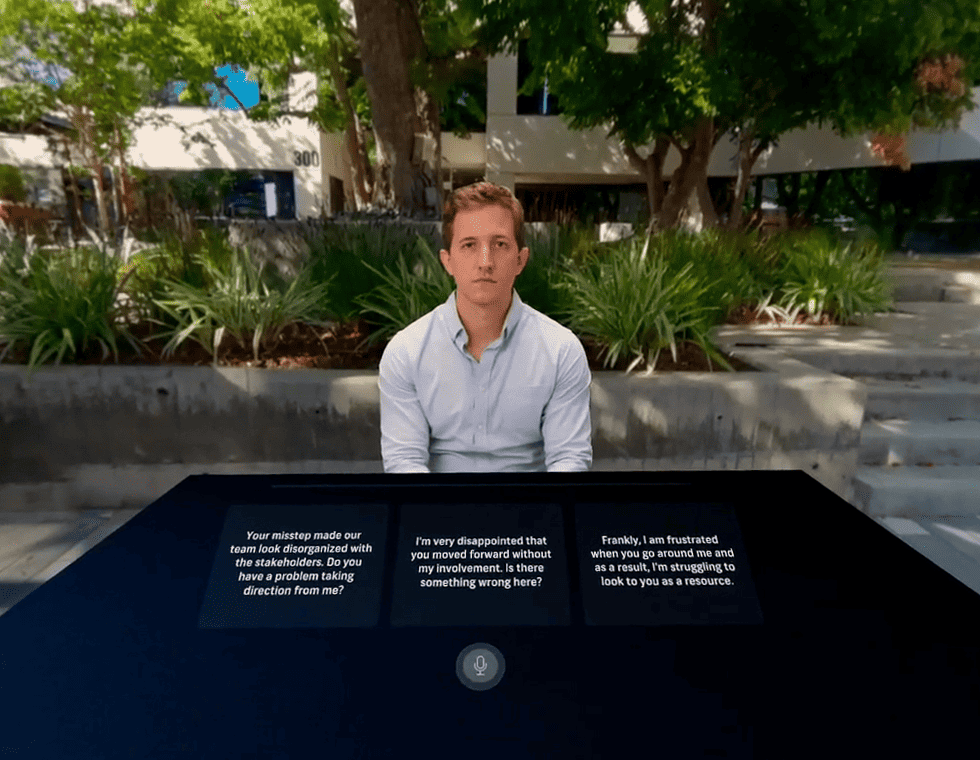
The first participating cohort consisted of Executive MBA students and took place in spring semester 2023. Many students felt they were having a conversation with a real person. “My favorite aspect of that was body language,” says Kyle Rubright 23EMBA, one of the first participants in the new VR program. “It was very palpable, the immediate feedback I was getting from the counter-party when we were speaking, just from the body language alone.”
For many students, Sethi says the experience was emotionally charged.
“It was interesting hearing students say how they thought they knew how to do this and then seeing them get visibly agitated during the exercise,” Perry-Smith says. “Seeing that tension in the students mirrored the real world. The next step from there was helping students continue to practice other modules so that they feel that they are progressing and improving.”
The most rewarding part is hearing students talk about the way they have incorporated these techniques in their lives.
Jill Perry-Smith
Sethi says the technology also allowed them to collect valuable data—such as how long students took to answer a question and which questions most people got right and wrong—and make changes to the scenarios accordingly.
Perry-Smith hopes to make this VR technology more turnkey with a teaching guide so it can be rolled out for use by other groups. Sethi says the ultimate goal is to take the technology to a global audience.
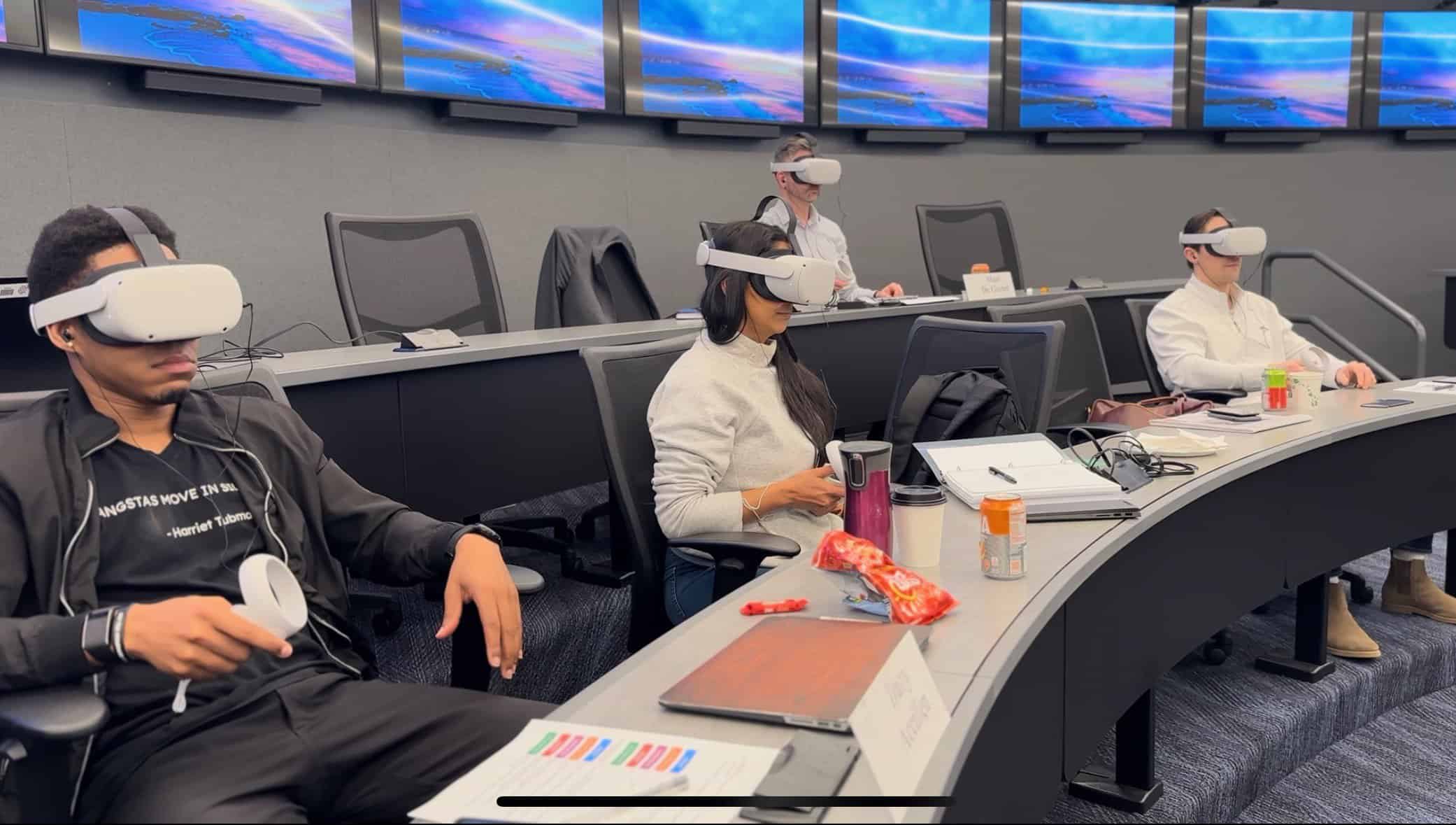

More generally, Perry-Smith says VR’s full value remains largely untapped.
“We are seeing more of these tools being introduced into the classroom but nowhere near the rate that is equivalent to their potential,” Perry Smith. “My philosophy is that it’s important for us to constantly evolve and innovate what we’re doing in the classroom, and this is an example of a technology that is just at the beginning stages of making an impact.”
The Difficult Conversations VR Simulation was created as part of an Innovations in Teaching Fund at Goizueta that was established through generous support from The Goizueta Foundation.
Whether you’re looking to accelerate your career or make a career pivot, our full-time One-Year MBA and Two-Year MBA programs and part-time Evening MBA and Executive MBA programs, prepare you to challenge business as usual and become the innovators who disrupt it. Learn more here.


